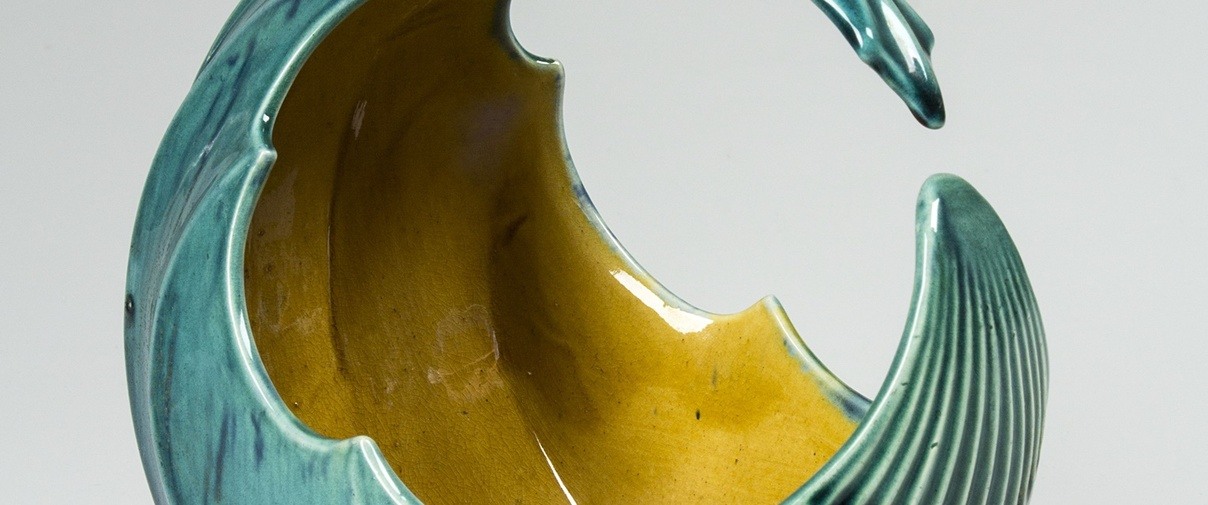Bowl shaped as a wave, England, approx. 1882-1889, porcelain, h. 17,8 cm, on loan from Ottema-Kingma Foundation.
In 1862 Dresser became involved in the organisation of the World Fair in London. He busied himself with decorating the stands, and saw an abundance of ceramics and arts and crafts from Japan. This inspired him to create various designs in which a Japanese influence is clearly evident. In 1878 he decided to undertake an extended trip to Japan, where he visited potteries and other workshops and immersed himself in their production techniques. This formed the basis for his book Japan, its Architecture, Art and Art Manufactures, which was published in 1882 and was a resounding success.
In 1879 Dresser became art director at the newly established Linthorpe earthenware factory in Middlesborough, UK. It was here that he designed this bowl, which later became known as the Wave Bowl. The factory manufactured the bowl, and continued to do even so after Dresser had left a few years later. The shape is based on a Japanese woodblock print by Katsushika Hokusai: Kanagawa Oki Nami Ura (The Great Wave of Kanagawa). This image was widely known in the West by the end of the nineteenth century. Dresser must also have been impressed by Hokusai’s powerful wave.
The Wave Bowl is a masterpiece in Dresser’s ceramic oeuvre. What makes it unique is that he did not simply copy the Japanese style, but gave it his own twist. He combined the Hokusai wave with godrons (elongated loops), circles and an azure blue glaze on the outside, with a mustard yellow glaze on the inside. Many artists were likewise inspired by the Far East and other exotic locations, following Dresser’s example.
Japan
Around the mid-16th century Portuguese explorers are the first Westerners to ‘discover’ the island empire of Japan, and trade soon developed. But the efforts by Portuguese missionaries to spread the Christian faith among the Japanese population were less appreciated. Japan decided to restrict access to the country. Only the port of Nagasaki remained open to foreigners. At the beginning of the seventeenth century, the Portuguese were replaced by the Dutch, who focused purely on trade and didn’t meddle in Japan’s internal affairs. The Japanese appreciated this. They decided to allocate the manmade island of Deshima off the coast of Nagasaki exclusively to the Netherlands, while other countries were banned from then on. The island was connected to the Japanese mainland by a bridge, but the Dutch weren’t allowed to set foot on it.
For more than 200 years, the Netherlands would remain the only Western country to trade with Japan. In the nineteenth century, the Americans decisively established their presence on the world stage. They went to Japan with the aim of opening up the closed country to trade. They succeeded. On 31 March 1854, a treaty was ratified that would allow America to be the first country to have direct access to a number of Japanese ports on the mainland. Other countries soon followed, including Great Britain and the Netherlands. Once the doors had been opened, interest in Japanese art and culture grew exponentially in the West.
Karin Gaillard, curator of European ceramics, and Eline van den Berg, curator of Asian ceramics at the Princessehof National Museum of Ceramics.
